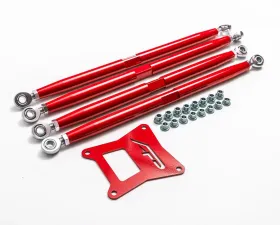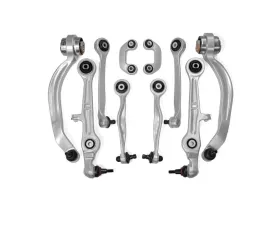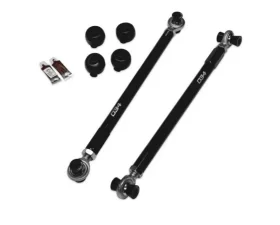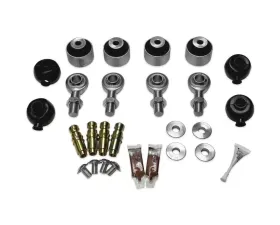4 Interest FREE Payments with Affirm - View Here
Handling Arms

Agency Power Adjustable Rear Radius Arms Black Polaris RZR 1000 | RS1 | XP Turbo 2014-2016
AP202420

Agency Power Adjustable Rear Radius Arms Black Polaris RZR 1000 | XP Turbo 2017-2021

Agency Power Adjustable Rear Radius Arms Black Polaris RZR Turbo S 2018-2022

Agency Power Adjustable Rear Radius Arms Blue Polaris RZR 1000 | RS1 | XP Turbo 2014-2016
AP202420

Agency Power Adjustable Rear Radius Arms Blue Polaris RZR 1000 | XP Turbo 2017-2021

Agency Power Adjustable Rear Radius Arms Blue Polaris RZR Turbo S 2018-2025

Agency Power Adjustable Rear Radius Arms Red Polaris RZR 1000 | RS1 | XP Turbo 2014-2016
AP202420

Agency Power Adjustable Rear Radius Arms Red Polaris RZR 1000 | XP Turbo 2017-2021

Agency Power Adjustable Rear Radius Arms Red Polaris RZR Turbo S 2018-2022

Agency Power Adjustable Rear Radius Rod Set Black Can-Am Maverick X3
AP202420

Agency Power Adjustable Rear Radius Rod Set Red Can-Am Maverick X3
AP202420

Agency Power Adjustable Rear Radius Rod Set Silver Can-Am Maverick X3
AP202420

034 MotorSport Adjustable Rear Toe Links Audi A4 | S4 | RS4 | A5 | S | RS5 2017+

034 MotorSport Adjustable Upper Control Arm Kit Front Audi A4, S4, RS4

034 MotorSport Rear Adjustable Upper Control Arms Audi A4 B5 1994-2001

034 MotorSport Rear Adjustable Upper Control Arms Audi A4 S4 RS4 B6 B7

034 Motorsport 034-401-1062 - B9 Upper Adjustable Control Arms, Track Spec

034 Motorsport Adjustable Rear Toe Links Audi | Volkswagen 2005+

034 Motorsport Adjustable Rear Upper Pair Control Arm Audi 8J/8P/8V | Volkswagen MK5/MK6/MK7

034 Motorsport Control Arm Kit, Density Line, B5/C5 Audi A4/S4 & A6, B5 Volkswagen Passat with Steel Uprights

034 Motorsport Control Arm Kit, Density Line, B6/B7 Audi A4/S4/RS4

034 Motorsport Density Line Adjustable Rear Toe Link, B8/B8.5 Audi A4/S4/RS4, A5/S5/RS5, Q5/SQ5

Why Should I Install Aftermarket Control Arms?
The first question we should first be asking is what are control arms and what do they do?
In automotive suspension, a control arm is a hinged suspension link between the chassis and the suspension upright or hub that carries the wheel.
The design of the control arm changes as quickly as the design and production technology of automobiles. "Double wishbone" suspension has long been the standard on most cars' front. As you might imagine, the upper and lower control arms looked like wishbones. They were sometimes called "A-Frames" or "A-Arms" depending on who you spoke to (if you're not familiar with poultry, the wishbones look like the letter "A" by the way). This concept is still popular in many modern vehicles as it works simply.
Upper Control Arms and Trailing Arms
Any type of control arms may be used for the rear of a vehicle with a solid axle to link the rear axle to the frame or unibody. Very frequently, there are three or four rubber bushed control arms on each end. Such control arms are called "arms trailing" or "rear trailing arms". If a vehicle has an independent rear suspension, the upper and lower A-arms, trailing arms, or some other special arrangement that suits the vehicle's form.
Lower Control Arms
Whenever a car has front or rear suspension in the style of a MacPherson strut, the only type used is lower control arms. There is no need for an upper control arm because the strut takes its position. It also means one less ball joint to think about, and a few fewer rubber trigger arm bushings.
The inboard end of a control arm is attached by a single pivot, usually a rubber bushing. It can thus control the position of the outboard end in only a single degree of freedom, maintaining the radial distance from the inboard mount.
This is in contrast to wishbones which are triangular and have two widely spaced inboard bearings. These constrain the outboard end of the wishbone from moving back and forth, controlling two degrees of freedom, and without requiring additional links.
Most vehicles use either one or two control arms per wheel, on both the front and rear suspension. Many front-wheel-drive vehicles only use a lower control arm, while trucks and SUVs often have both an upper and lower control arm. A control arm connects the wheel hub and steering knuckle to the frame of the vehicle. They are typically equipped with bushings on the frame side of the vehicle and a ball joint on the wheel side of the vehicle that allows flex and controlled movement according to road conditions and steering input from the driver.
Control arms are most commonly encountered as part of the MacPherson strut independent front suspension. The control arms are perpendicular to the axis of the vehicle and are termed track control arms. A diagonal radius rod constrains the strut from moving forward and back.
In MacPherson's original design, the anti-roll bar also acted as the radius rod. This requires the bar to be attached through a ball joint, to also provide longitudinal control. In most contemporary designs, still commonly termed MacPherson struts, the radius rod and anti-roll bar are now separate, with the anti-roll bar mounted in a sliding bush.
Camber Arms
Camber is the degree from which the wheel and tire are connected to the ground ??? when it is level. Looking at the wheel and tire head-on is the best way to imagine what the camber looks like. The tire remains a steady camber angle when static, while the contact patch is lowered while the car is cornering due to body roll. Camber levels have to be taken into account and modified accordingly to combat this impact to have the largest amount of tire on the road when cornering.
Most Popular Options for Camber Adjustments
- Camber Plate
- A camber plate is mounted on top of the coilover strut which allows the coilover to move towards the car or away from it. Starting to lean the coilover will change the camber in the same direction, moving it towards the vehicle will raise negative camber and leaning away from the car will increase positive camber.
- Adjustable Control Arms
- Adjustable control arms will substitute your stock control arm, and provide you with additional adjustment, typically threaded. One of the key places is the control arms and they'll always be too long. Using a threaded adjustable neck, you'll be able to change it to the correct size or width.
- Camber Bushings
- Often camber bushings can be used and mounted into your factory control arms. At the end of the control arm, the plant control arm bushings should be centered. Camber bushings will also have a tightening hole off-set in the bushing and allow for small but noticeable camber adjustments.
- Camber Bolts
- Not all vehicles should use camber bolts but can be used if they fit in your car. These will basically be a smaller diameter than your stock hardware but will have a "lobe" off-set that will adjust the hub lean depending on the lobe's location.
Toe Arms
Toe reflects the angle produced from pointing the tires from a top-down view inward or outward ??? just like looking down at the feet and angling them inwards and outward. Also, tread wear and extended tire life are important to the right foot. If the tires are pointing inward or outward, they scrape against the road surface and cause damage around the edges. That being said, tread life may often be traded for success or stability.
Positive toe happens as both tires' foreheads begin to face each other. Positive toe allows both wheels to produce normal load against each other which decreases the capacity to switch. Good tow, therefore, produces more straight driving components. Usually, rear-wheel-drive vehicles have a marginally positive rear toe due to rolling resistance-allowing the suspension arms to drag outwards. The slight positive toe straightens the wheels at speed, effectively evening them out and avoids bent rims of the tires.
Trailing Arms
A trailing-arm suspension, sometimes referred to as trailing-link is a vehicle suspension design in which one or more arms are linked on both the axle and a pivot point. Actually there are 2 types of these components which are the Semi-Trailing Arm and also the Trailing Arm.
- Trailing Arm
- In live axle setups, trailing-arm designs often use only two or three connections and a Panhard rod to laterally position the wheel. In an independent suspension arrangement, a trailing arm design can be used. Every other wheel hub is situated in front of the wheel only by a large, roughly triangular arm, which pivots at one point. Seen from the edge, this arm is approximately parallel to the pavement, with the angle varying based on road irregularities. A twist-beam suspension system is very similar except that a beam connects the arms, used to locate the wheels, twists and has an anti-rolling effect.
- Semi-Trailing Arm
- A semi-trailing arm suspension is a versatile, independent rear suspension mechanism for vehicles where each wheel hub is only positioned by a wide, roughly triangular arm that swivels at two points. The line created by the two pivots is somewhere between perpendicular and parallel to the longitudinal axis of the car and it's usually parallel to the field. Trailing-arm and multi link suspension models are used much more widely for a vehicle's rear wheels in which they can enable a softer floor and more ground clearance.
What are the benefits of installing Aftermarket Control Arms?
Most factory control arms are set at only one position. Which leaves the advantage of adjustability to aftermarket control arms, because when you tune your car, tuning the suspension is almost always a must.
Adjustable control arms are used to adjust wheel camber. Camber is the vertical alignment of the wheels. The negative camber means that the top of the wheel is tipped inward toward the center of the vehicle. Positive camber means that the top of the wheel is tipped outward, away from the center of the vehicle. Adjusting camber is a huge factor when it comes to racing, stance, and the lowering or lifting of a vehicle.
When a lowering kit or a lift kit is installed on a car or truck, adjustable control arms are needed to correct the negative or positive camber that goes along with them. If not corrected, the tires won't have the proper traction, and they will wear unevenly and prematurely.
So, to make the world a better or a safer place, replacing your control arms when tuning your car - or when symptoms start popping up - is a very good idea.
Vivid Racing carries high-performance parts for almost any need. Click these links to chose from our selection of Body Kits, Big Brake Kits, Seats, Custom Wheels and Tires, Engine Parts, Exhaust Parts, Intakes, Suspension, and Transmission Parts.
Buying from Vivid Racing is the best choice you can make. We back every part we sell with our personal guarantee of satisfaction.
Buy online or give one of our world-class sales professionals a call at 1-480-966-3040 If you don't see what you are looking for Call Us.
We can help. Vivid Racing was voted #1 in customer service nationwide!
Hands-On Experience and Professionalism is what makes us the best.
Vivid Racing carries Nitrous Kits from all the top manufacturers in the racing industry. Our manufacturers include: NOS and Nitrous Express
LOOKING FOR OEM PARTS? We can help.
Are you tired of paying overly inflated prices that the dealers charge for their parts? Vivid Racing can save you up to 60% off the dealers' prices. Click here to visit our OEM PARTS STORE.













 Brakes
Brakes  Driveline
Driveline  Electronics
Electronics  Handlebars & Controls
Handlebars & Controls  Package Deals
Package Deals  Wheel Accessories
Wheel Accessories  Wheels by Vehicle
Wheels by Vehicle  Tools and Maintenance
Tools and Maintenance  Universal & Repair
Universal & Repair  Vivid Racing Gear
Vivid Racing Gear 
